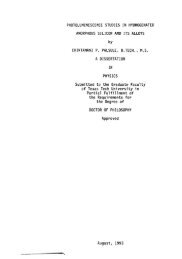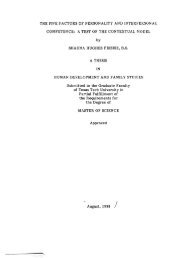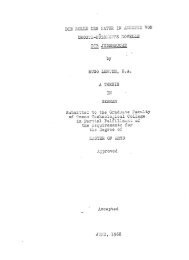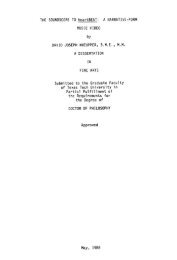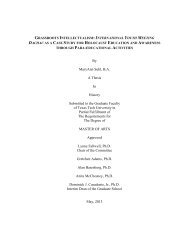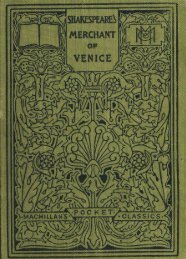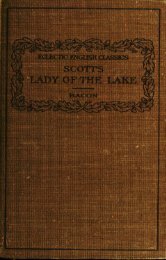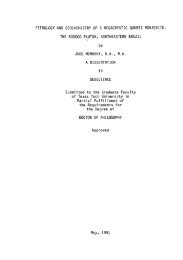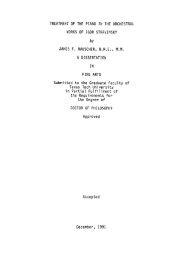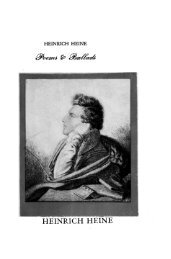Chandra Prakash Bhongir, Civil Engr, May04 - Repositories
Chandra Prakash Bhongir, Civil Engr, May04 - Repositories
Chandra Prakash Bhongir, Civil Engr, May04 - Repositories
You also want an ePaper? Increase the reach of your titles
YUMPU automatically turns print PDFs into web optimized ePapers that Google loves.
prevalent. Writing in 1941, Vandeleur Robinson after visiting Albania in 1913 and 1926<br />
noted a most peculiar fact. Albanians regarded the greatest event in their history<br />
Scanderbeg’s stand against the Turks in the fifteenth century. 10 This observation is<br />
hardly surprising since the Albanian nationalist movement which began in the middle of<br />
the nineteenth century had as its main goal the fulfillment of Scanderbeg’s dream:<br />
Albanian independence.<br />
Scanderbeg’s return to Albania and his first declaration of independence has been<br />
dated November 28, 1443. This date of independence is significant in Albanian history.<br />
When Ismail Qemali declared independence in Vlora in 1912 he resurrected<br />
Scanderbeg’s flag. The date for this declaration of independence was also November 28.<br />
Since 1912 every regime in Albania, has rooted itself on the memory of Scanderbeg to<br />
gain legitimacy, and November 28 has become a date pregnant of emotive meaning.<br />
Derek Hall, a British journalist who has written extensively on Albania, also<br />
recognizes the importance of Scanderbeg as a national symbol especially during the<br />
communist regime, 1941-1990. The communists in Albania viewed Albanian liberation<br />
from Nazi Germany as another kind of independence. They claimed Albania liberated<br />
from foreign rule on November 29, 1944. But the connection to Scanderbeg was not lost.<br />
Indeed the communist regime used the figure of Scanderbeg to its advantage. The Day of<br />
the Flag, November 28, was restored as a national day; the main square of the capital,<br />
Tirana, became Scanderbeg Square; Kruja, Scanderbeg’s capital was made into a Hero<br />
City; and on the ruins of the old fortress, in 1980, the newest Scanderbeg Museum,<br />
1941):13-15.<br />
10 Robinson, Vandeleur, Albania’s Road to Freedom, (London: George Allen & Unwin Ltd,<br />
37



